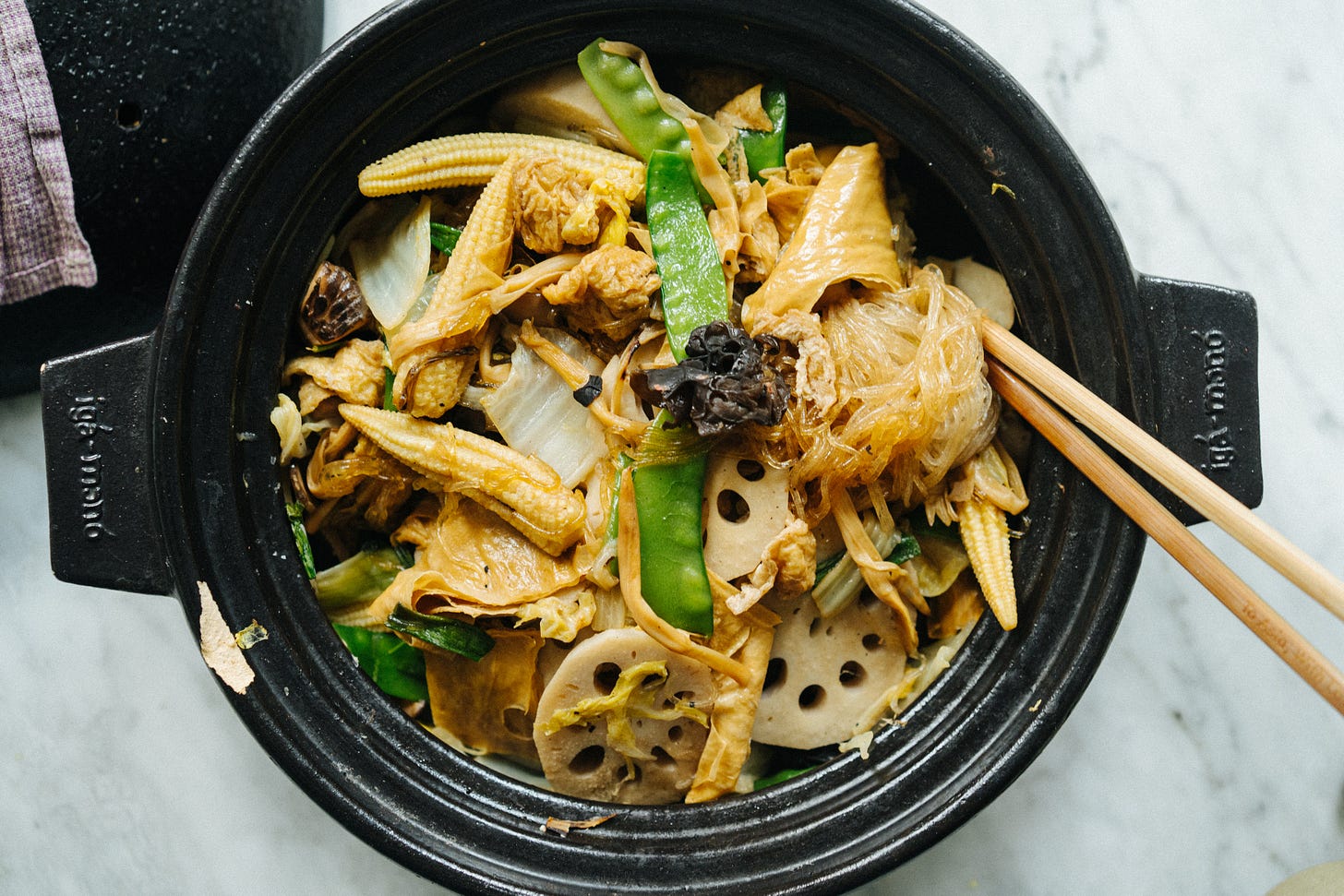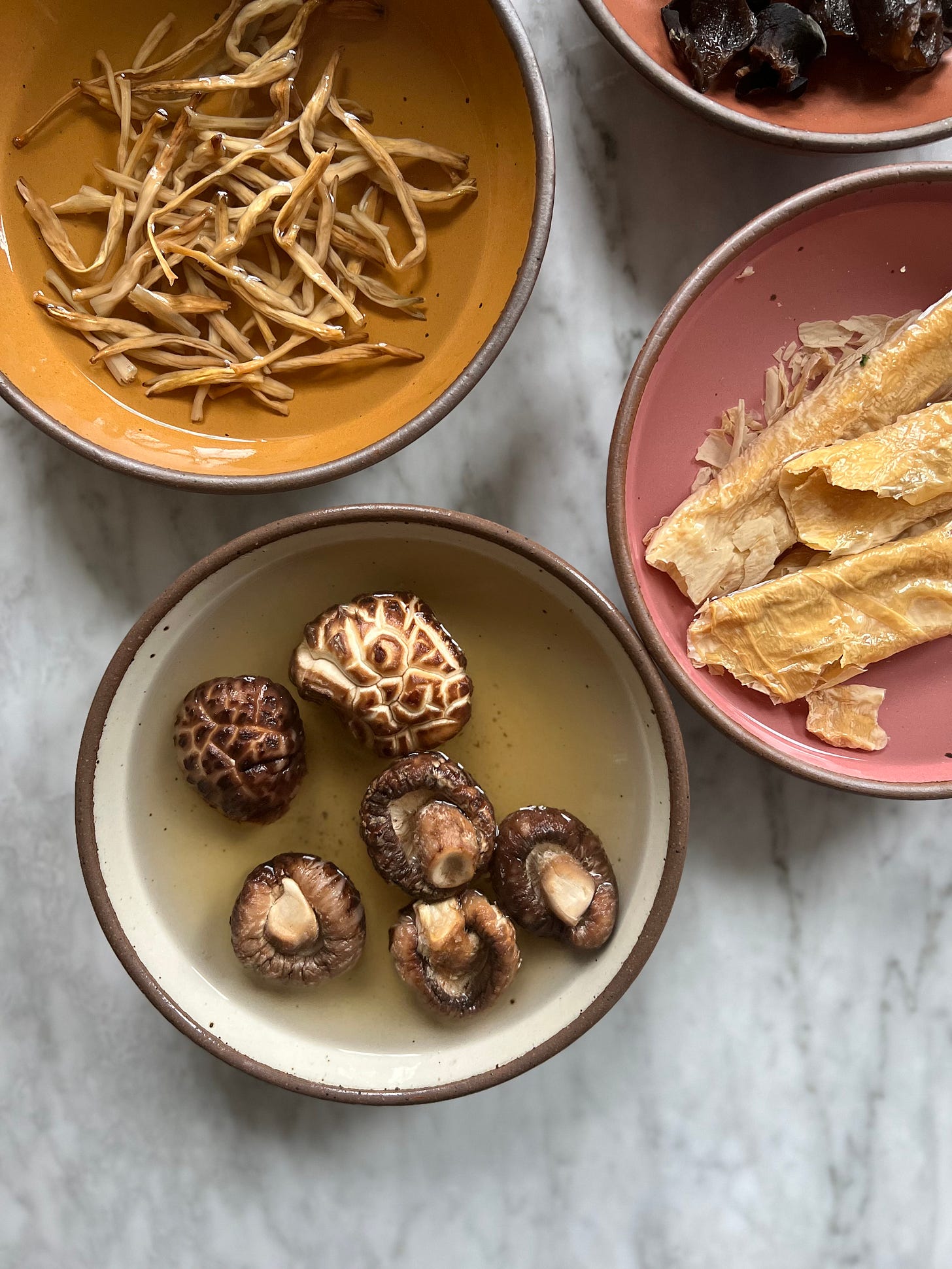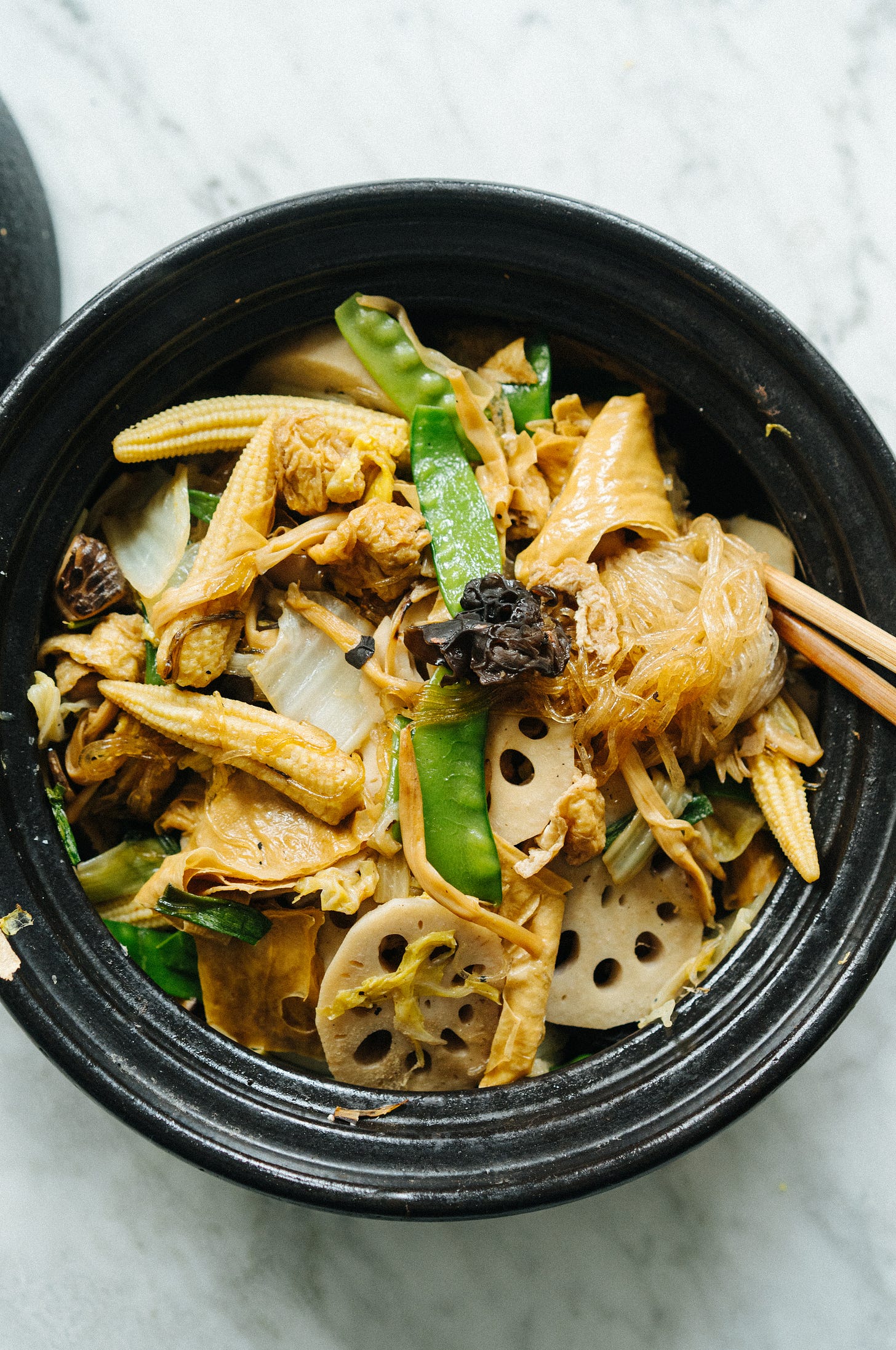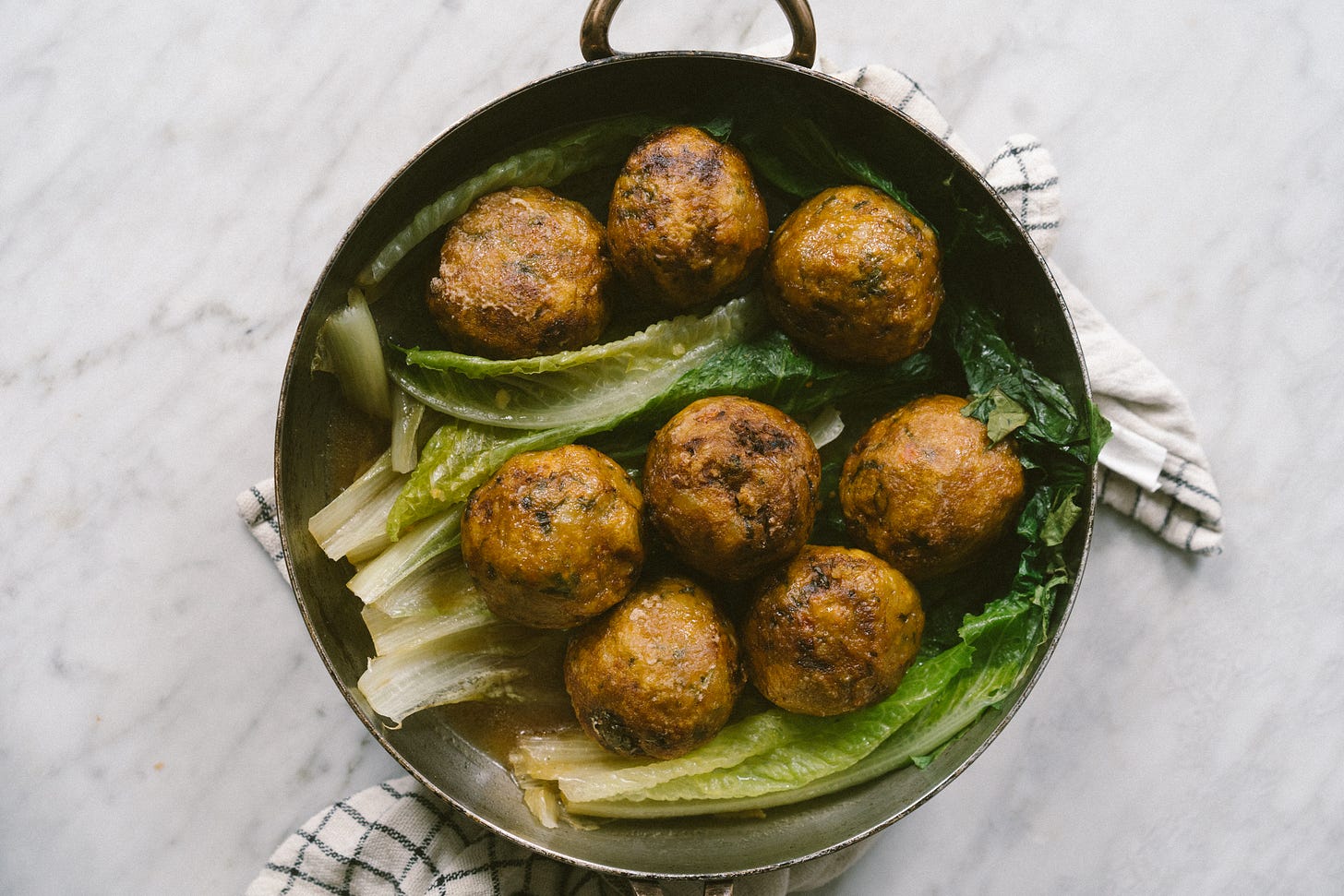Dear Community,
This time of year, we hear much about the happiness of new beginnings. But for me, I am often wistful, reflective. I lost my dad on New Year’s Eve, decades ago, but even today, it is not a day that I celebrate. Most of the time, I don't wait up for the clock to tick over, the fireworks to begin or the ball to drop. When I was younger, I felt guilty about not feeling the new year cheer, but now, it is much easier to accept the quiet that I crave on this day. I don’t want to misrepresent; I don’t spend the day morose or forlorn, but my heart is undeniably heavy. Over the years, I’m managed to balance that load with joy. A huge part of that joy is cooking.
Of course, those in Australia who already own Tenderheart know a part of this story. And those in the rest of the world will learn about it soon. Up until now, I’ve held back from talking too much about the backstory of the book because I know so many don’t have access to the book yet (thank you, thank you for your patience!). But as May looms, I will indeed to sharing more Tenderheart reflections. Tenderheart is more than a book about vegetables - it is a story about how food can keep us tethered to our loved ones, even when they are no longer with us. It is a story about finding joy and solace amongst the grief and loss. It sounds heavy but it really isn’t - in fact, it is the opposite. It is an incredibly incredibly uplifting book, full of a tender, vivacious spirit. I’ve been buoyed by the response of readers in Australia so far - so many have found comfort from Tenderheart’s words and flavours. Just in case, you can order and preorder Tenderheart via the links here.
As always, thank you to everyone for sharing photos of their holiday meals with me via social media. It is always such a thrill to see what everyone is making - I saw that many Aussies received Tenderheart under their tree - YAY.
In my last newsletter, I mentioned the possibility of a Lunar New Year cooking class in January. Unfortunately, due to deadlines and new year projects, I won’t be able to pull it off this month, but since 96% of people were interested in a dumpling class, I’ll definitely do it soon! Stay tuned.
There's 2 recipes this month. A new one and one I shared exclusively in my Lunar New Year newsletter last January which many of you may not have seen (before I moved to Substack). Enjoy and welcome to the Year of the Rabbit.
This month, I wanted to share one of my favourite and ESSENTIAL Lunar New Year recipes. It is a dish called lo han jai, otherwise known as Buddha’s Delight or Buddha’s Feast. Sometimes it is just called jai. When covering Lunar New Year food, mainstream media loves to focus upon ‘lucky’ long life noodles and dumplings, and while we definitely eat those foods, the true HEART of our Cantonese Lunar New Year table is lo han jai. It is a dish with origins in Buddhist monk cuisine and it is vegan as many Buddhists observe the custom of not eating any meat on New Year’s Day (because meat involves killing and that is not auspicious on this day). My mother, who strictly observes this no-meat ritual, also makes lo han jai at many cultural celebrations including Ching Ming (Tomb Sweeping Day), Mid-Autumn Festival, and birthdays. Traditionally, this dish is made without the use of any alliums (in accordance with Buddhist belief that plants from onion family excite the senses). However, I do use ginger and scallions in my recipe.
There is no single recipe for lo han jai. Rather, like many traditional recipes, it is a work in progress, dependent upon both family customs and pantry ingredients. The key is bringing together ingredients with lots of different textures. While many of the ingredients may not look familiar, they are actually easily found at most Asian grocery stores. I’ve done some research and you can find the red (and white) fermented bean curd, dried lily flowers and tofu skin from here in Australia and here in USA. If you have stockists from other countries, please leave your tips in the comments below.
My mum’s essential ingredients are shiitake mushrooms, dried lily flowers, bean curd skin, tofu puffs, lotus root, water chestnut, mung bean vermicelli and fresh greens. She also added an ingredient which my kids call ‘hair’ - a black moss called fat choy (now almost impossible. In my recipe below, I encourage you to make it your own - feel free to use all or just a few of the ingredients. Other ingredients you may consider are:
bamboo shoots
carrots
bean sprouts
dried red dates (jujubes)
asian greens like baby bok choy, tatsoi or gai larn (even broccoli?!)
Lo han jai is traditionally made with naam yu or red fermented bean curd, which imparts a distinct funky saltiness. It can be found fairly easily at Chinese grocery stores. If you can’t find it (understandable), substitute with another fermented soy bean product - miso is the best substitute but you could also try chinese fermented black soy beans or doenjang. They will not give you the exactly the same result, but it will give you an acceptable representation of this dish.
If you didn’t grow up in a Chinese family, this dish may feel unattainable or unfamiliar but I encourage you to give it a go. It’s a textural feast and goes really well just with a bowl of rice.
Lo han Jai (Buddha’s delight)
Serves 4, with rice
1 tablespoon neutral oil
1 inch piece of ginger, peeled and sliced
about 45g / 1.5 ounce (5-6 lumps) of red fermented bean curd (naam yu)*
4 green onions (scallions), white and green parts separated and cut into 2.5cm / 1-inch pieces
6 dried Chinese shiitake mushrooms, soaked in hot water for 30 minutes
8 black fungus, soaked in hot water for 30 minutes
20g dried lily flowers (optional), soaked in hot water for 30 minutes
½ teaspoon white sugar
50g dried tofu/beancurd skin, soaked in warm water for 30 minutes
60g fried tofu puffs
450g / 1 pound (¼ small) napa/chinese cabbage (wombok), cut into 5cm / 2-inch pieces
6-8 slices of fresh (or frozen) lotus root
2 tbsp soy sauce
1 cup mushroom soaking water or vegetable stock
1 tablespoon sesame oil
white pepper
75g mung bean vermicelli noodles, soaked in warm water for 10 minutes
60g / 2 ounces snow peas or baby bok choy, trimmed
100g / 3.5 ounce canned baby corn
3 teaspoons sesame oil
handful toasted sesame seeds
cooked white or brown rice, to serve
* if you can’t find naam yu (red fermented bean curd), substitute with fu yu (white fermented bean curd) or another fermented soy bean product - miso, Chinese fermented black soy beans or Doenjang.
Squeeze out the liquid from the mushrooms, cut off the stems (the stems are super chewy and I love them, so I add the stems to the dish but others discard) and slice; keep the mushroom soaking water for later. Drain the black fungus, trimming off any hard stems, and tear any large pieces in half. Drain the beancurd sticks and cut into 5cm (2 inch) pieces.
Heat a large Dutch oven or wide pot over medium-high heat. Add the oil and when hot, throw in the ginger and white part of the scallions and stir until fragrant, about 30 seconds. Reduce heat to medium, and add the red fermented beancurd, using a spoon or chopsticks to break it up. Add the mushrooms, black fungus, and lily buds, sugar, and a stir for 1-2 minutes. Next, add the cabbage, beancurd sticks, tofu puff, and lotus root and toss well for 1 minute. Add the soy sauce, mushroom soaking water or vegetable stock, and combine well. Cover and cook for 6-7 minutes until the cabbage has wilted.
Drain the mung bean vermicelli and add to the pot, along with the baby corn, snow peas, and green parts of the green onions and stir to combine. Cover and cook for 2-3 minutes, until the snow peas are bright green and crisp-tender and the vermicelli has expanded and soaked up some of the liquid. Drizzle over sesame oil, and taste, seasoning with salt, if required, and white pepper. Remove from heat immediately and scatter with a few sesame seeds. Serve hot, with rice.
BONUS RECIPE//
I’ve welcome sooooo many of you to TO VEGETABLES, WITH LOVE in the past 12 months, so many of you may not have seen this newsletter exclusive recipe which I sent out last January.
This recipe is my vegan take on a Shanghainese dish called shī zī toú in Mandarin or si ji tou in Cantonese, which translates to lion’s head. The large meatballs, traditionally made with pork, represent the lion's head and the greens—typically bok choy or Chinese cabbage - represent the mane.
My ‘meatless balls’ are powered by potato and firm tofu, which are fried and then steamed with lettuce, offering a complete dish which is both comforting and hearty. I use a hybrid method to fry the potato balls - I use a small, tall pot (I use this one), add a 2-3cm (about 1 inch) of oil, and fry one side at a time. You can absolutely deep fry, if you are inclined to do so. I love braised/steamed lettuce, it retains a nice crunch, and offers a pleasing slippery mouthfeel, but you could use Chinese cabbage, or any Asian greens.
Lion’s Head Potato Balls
Serves 4
500g (about 2 large) potato, peeled and cut into 1cm dice
200g extra firm tofu, drained and crumbled
1 (about 75g) small carrot, peeled and finely chopped
100g (1/2 cup) water chestnuts, finely chopped
20g (2.5cm / 1 inch) piece ginger, peeled and finely chopped
1 clove garlic, peeled and finely chopped
30g (about ½ bunch) coriander (cilantro), leaves and stem finely chopped
salt and white pepper
2 teaspoons soy sauce
2 teaspoons dark soy sauce
70g (½ cup) cornflour (cornstarch)
neutral oil
1 (about 300-350g) head of cos (romaine) or iceberg lettuce, washed, cored and leaves separated
1 green onion (scallion), finely sliced
Sauce
250ml (1 cup) vegetable stock
1 tbsp soy sauce or tamari
2 teaspoon Shaoxing wine (or dry sherry)
½ teaspoon white sugar
1 teaspoon cornflour (cornstarch)
1 clove garlic, peeled and very thinly sliced
20g (2.5cm / 1 inch) piece ginger, peeled and sliced
Bring a large pot of salted water to the boil. Add the potatoes and cook for 8-10 minutes, until they are completely tender. Drain well in a colander and allow them to dry out for a few minutes.
Place the potatoes into a large mixing bowl and add the tofu, carrot, water chestnuts, ginger, garlic and coriander. Using your hands or a large spoon, mix well, squishing and breaking up the potatoes until they are roughly mashed (your hands are the most effective for this job) and everything is well combined. Add about ½ teaspoon of salt, a good pinch of white pepper, soy sauce, and dark soy sauce and then taste, making sure it has enough flavour. Adjust seasonings if you need to. When you are happy with the flavour, shape the mixture into 8 giant round balls. They will be the size of an enlarged golf ball.
Place the cornflour onto a plate or a shallow bowl. Roll each potato ball in the cornflour so that it is completely covered. Set aside.
In a small deep pot, wok or other suitable pot for frying, add oil so that it comes 2.5-3cm (a little more than 1 inch) up the side of the pan. Heat until hot – place a wooden chopstick or spoon into the oil and if it sizzles, it is hot enough. Add about 3 balls (or however many you can comfortably fit without overcrowding) into the pan and fry on medium high heat for 2-3 minutes, and then flip the ball over and fry the other side for another 2-3 minutes, until it is golden all over. You can also use a deep fryer to cook them. When ready, place them onto a plate lined with absorbent kitchen towel or paper to soak up excess oil.
Prepare the sauce by combining the vegetable stock, soy sauce, Shaoxing wine, sugar, and cornflour (cornstarch) in a bowl or jug. Stir until the cornstarch is dissolved.
Heat a large, deep, frying pan (skillet) on medium high. Add 1 tablespoon of oil along with the garlic and ginger. Allow to sizzle for 15-30 seconds, until fragrant. Pile the lettuce into the pan, pushing it down slightly – it will look like a lot of leaves, but it cooks down considerably. Briefly stir the sauce again to make sure it’s combined and pour it over the lettuce. Place the potato balls on top of the lettuce, cover and cook on medium-high for 5 minutes.
To serve, top with green onions (scallions) and serve with rice or as part of a banquet.








So excited to try these recipes. Thank you for sharing.
Looking forward to seeing how you weave in your loved ones through your recipes. I reflect on food and loss quite a bit ever since losing my youngest uncle to COVID. Even now, I haven't been able to cook any of the dishes he would take me out to eat. But I know that some day, part of the joy of remembering him will be found in cooking, like you said. Thank you for sharing!